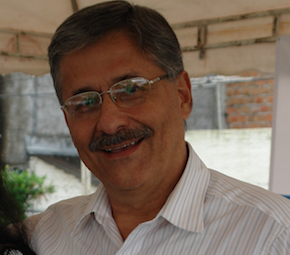Introduction
In 2011, Fundación Carvajal (FC) decided to expand operations into Buenaventura, the second largest port in Colombia and one of its poorest cities. The foundation was celebrating its 50 th year assisting poor communities across the state of Valle del Cauca, and especially the city of Cali. Buenaventura, however, posed special challenges. Its poverty level hovered at over 80 percent; unemployment was nearly 60 percent; and some 50 percent of the population was under 24 years old. Like the rest of the country, the city had suffered from 60-plus years of armed conflict between rebels and the central government; there was limited physical and civic infrastructure. While the port was active, locals had not benefited much.

© Fundación Carvajal
Roberto Pizarro
FC had recently standardized its approach for social intervention, combining integrated services with focus on a specific geographical area. It worked primarily at the family level in four areas: income generation; housing and environmental conditions; education; and community empowerment. The first step, however, was to build trust, especially with community leaders. To be successful, FC needed full collaboration from its partner communities. The situation in Buenaventura was complicated by a series of previous social programs that had failed, leaving citizens cynical about outsiders.
In January 2011, a small team reporting to FC Executive Director Roberto Pizarro moved to Buenaventura to research conditions in the city and to select four districts for intervention. By October, it had chosen comunas 3, 5, 10 and 12. In January 2012, Pizarro selected Dr. Alvaro Dulce to oversee the project. Dulce had worked with FC in Cali and had extensive experience in public health and community work.

Dr. Alvaro Dulce
But Pizarro had an unexpected requirement: he wanted Dulce’s team to complete a socioeconomic survey of the selected districts in Buenaventura by April 2012. Typically, a household survey—with what could be perceived as intrusive questions—took place only after an extended period of trust-building activities. The goal was to survey 2,080 households in 17 neighborhoods within the two target zones. The survey would provide a baseline for FC as it designed new community development programs and would help secure additional funding for the intervention as a whole.
Dulce was concerned. First of all, security conditions in the target districts were poor. He was not sure he could send pollsters into those areas before the community knew a lot more about FC and its intentions. Second, he wondered whether families would answer the survey questions absent an endorsement from local leaders. Without accurate data, the survey would be a waste of time, money and effort. Finally, were the FC pollsters to create or be party to any kind of incident, not only the data but the credibility of FC and the success of the entire Buenaventura project could be at risk.
To meet the April deadline, Dulce and his team would have to design the survey and plan how to deploy surveyors by the end of February at the latest. But before turning to that, he had to decide whether to accept the accelerated timetable, or protest it.